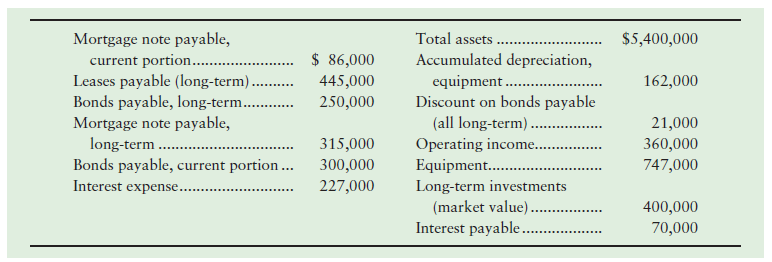The accounting records of Burgess Foods, Inc., include the following items at December 31, 2018: Requirements 1.
Question:
The accounting records of Burgess Foods, Inc., include the following items at December 31, 2018:

Requirements
1. Show how each relevant item would be reported on the Burgess Foods classified balance sheet. Include headings and totals for current liabilities and long-term liabilities.
2. Answer the following questions about Burgess Food’s financial position at December 31, 2018:
a. What is the carrying amount of the bonds payable (combine the current and long-term amounts)?
b. Why is the interest-payable amount so much less than the amount of interest expense?
3. How many times did Burgess Foods cover its interest expense during 2018?
4. Assume that all of the existing liabilities are included in the information provided. Calculate the leverage ratio and debt ratio of the company. Use year-end figures in place of averages where needed for the purpose of calculating ratios in this problem. Evaluate the health of the company from a leverage point of view. Assume the company only has common stock issued and outstanding. What other information would be helpful in making your evaluation?
5. Independent of your answer to (4), assume that Footnote 8 of the financial statements includes commitments for long-term operating leases over the next 15 years in the amount of $4,000,000. If the company had to capitalize these leases in 2018, how would it change the leverage ratio and the debt ratio? How would this impact your assessment of the company’s health from a leverage point of view?
Financial StatementsFinancial statements are the standardized formats to present the financial information related to a business or an organization for its users. Financial statements contain the historical information as well as current period’s financial... Common Stock
Common stock is an equity component that represents the worth of stock owned by the shareholders of the company. The common stock represents the par value of the shares outstanding at a balance sheet date. Public companies can trade their stocks on...
Step by Step Answer:

Financial Accounting
ISBN: 978-0134725987
12th edition
Authors: C. William Thomas, Wendy M. Tietz, Walter T. Harrison Jr.





